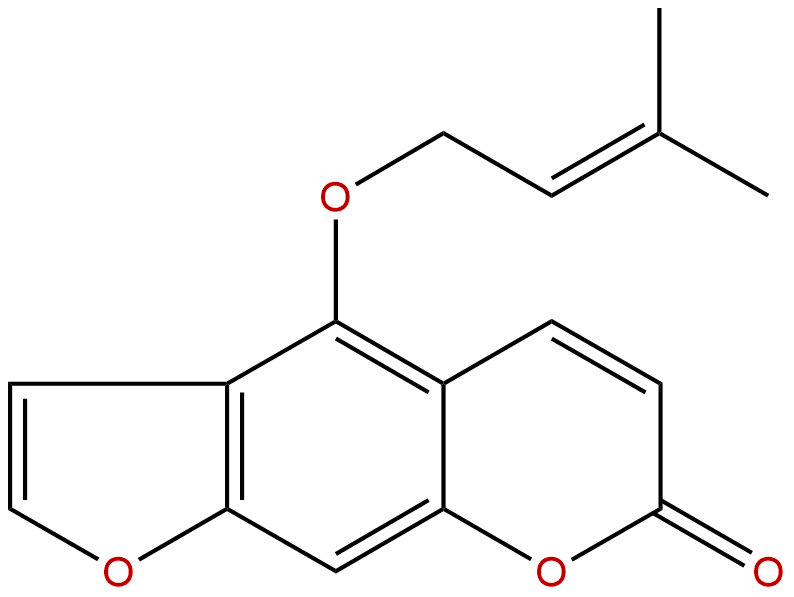Product name: Isoimperatorin
Synonym name: 4-Prenyloxypsoralen; Auraptin; Cnidin
Catalogue No.: BP0785
Cas No.: 482-45-1
Formula: C16H14O4
Mol Weight: 270.284
Botanical Source: Imperatoria ostruthium and Angelica spp. Also from Cnidium dubium. Also in Peucedanum, Prangos, Ruta, Cachrys and Hippomarathrum spp.
Physical Description: Powder
Type of Compound: Coumarins
Purity: 95%~99%
Analysis Method: HPLC-DAD or/and HPLC-ELSD
Identification Method: Mass, NMR
Packing: Brown vial or HDPE plastic bottle
Storage: Store in a well closed container, protected from air and light. Put into refrigerate or freeze for long term storage.
Whenever possible, you should prepare and use solutions on the same day. However, if you need to make up stock solutions in advance, we recommend that you store the solution as aliquots in tightly sealed vials at -20℃. Generally, these will be useable for up to two weeks.
The product could be supplied from milligrams to grams, up to kilograms
Inquire for bulk scale.
Descriptions:
Isoimperatorin is a medicinal herbal product that is isolated from the dried roots of Angelicae dahuricae ,can inhibit the cyclooxygenase-2 (COX-2) and COX-1-dependent phases of prostaglandin D 2 (PGD 2 ) generation in bone marrow-derived mast cells (BMMC) in a concentration-dependent manner, with IC 50 values of 10.7 μM and 24 μM, respectively; it may provide the basis for novel anti-inflammatory drugs.[1]
Isoimperatorin possesses a potent hepatoprotective effect against AFB1, presumably through the induction of GSTalpha and the direct inhibition of CYP1A at 2 microM concentration , and suggests that it should be considered a potential chemopreventive.[2]
Isoimperatorin isolated from Cimicifugae Rhizome selectively inhibits TNF-α-induced expression of VCAM-1 at least by upregulation of PPAR-γ, and signals for ERK1/2, PI3K, and PKC are involved in this effect.[3]
Isoimperatorin (IO) has antimycobacterial activity against Mycobacterium tuberculosis strain H37Rv (ATCC 27294), IO has antimycobacterial activity against 2 drug-sensitive and 6 drug-resistant isolates, with minimum inhibitory concentrations (MICs) of 50-100 ug ml(-1) and 100-200 ug ml(-1), respectively; and IO exhibits synergistic antimycobacterial effects with rifampin (RMP), isoniazid (INH) and ethambutol (EMB) against 6 drug-resistant strains, with fractional inhibitory concentration index (FICI) values of 0.133–0.472, 0.123–0.475 and 0.124–0.25, respectively.[4]
References:
[1] Moon T, Jin M, Son J, et al. Arch Pharml Res, 2008, 31(2):210-5.
[2] Pokharel Y R, Han E H, Kim J Y, et al. Carcinogenesis, 2006, 27(12):2483-90.
[3] Lidiya Moon, Yu Mi Ha, Hwa Jin Jang,et al. J Ethnopharmacol, 2011, 133(2):336-44.
[4] N. Guo ?, J. Wu ?, Fan J, et al. Lett Appl Microbiol, 2014, 58(4):344–9.
[5]Yong Chen, Yinchi Jin, Yifen Chen, et al. J Liq Chromatogr R T, 2009, 32(16):2384-95.


